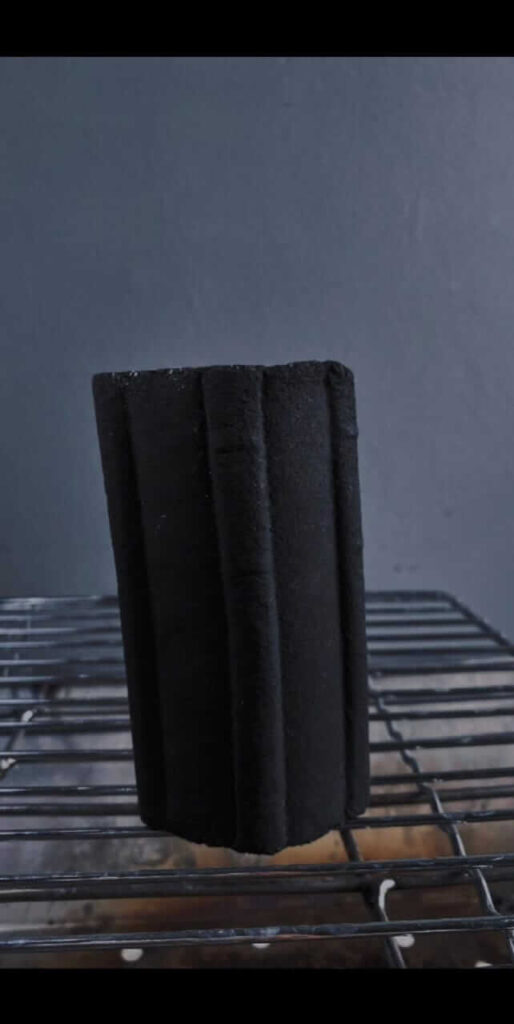History of Charcoal Briquettes highlights their evolution from basic fuel to a sustainable solution for heating, cooking, and industry. This article delves into the History of Charcoal Briquettes, exploring their origins, technological advancements, and their pivotal role in shaping modern energy practices. Learn how these eco-friendly fuel alternatives have grown in relevance, aligning with today’s push for sustainability and environmental responsibility.

Introduction Charcoal Briquettes
Read More : charcoal briquettes sustainable solutions
Charcoal has been a fundamental energy source for centuries, serving as a key material for cooking, heating, and industrial processes. Over time, the need for a more efficient and environmentally friendly form of charcoal led to the invention of charcoal briquettes. These compact blocks of compressed charcoal and additives have revolutionized fuel usage, offering consistency, efficiency, and sustainability.
In this comprehensive guide, we will delve into the early beginnings of charcoal briquettes, their invention, evolution, and the role they play in modern sustainable practices.
Early Beginnings Charcoal Briquettes
The use of charcoal dates back thousands of years, with ancient civilizations employing it for smelting metals, cooking, and heating. Early forms of charcoal were created by burning wood in low-oxygen environments, a process that removed water and volatile compounds to leave behind a high-carbon material.
Charcoal as a Vital Resource
- Metalworking: Ancient blacksmiths relied on History of Charcoal Briquettes charcoal for its intense heat and ability to reach temperatures necessary for metalworking.
- Cooking and Heating: Charcoal’s lightweight and high energy density made it a preferred fuel source in regions with limited firewood availability.
While traditional lump charcoal served its purpose, it was often inefficient and produced uneven heat. This inefficiency paved the way for innovation, setting the stage for the creation of charcoal briquettes.
Invention of Charcoal Briquettes
The modern concept of charcoal briquettes can be traced back to the early 20th century. Henry Ford, the founder of Ford Motor Company, played a pivotal role in popularizing charcoal briquettes.
Henry Ford and the Birth of Briquettes
- Industrial Waste Utilization: In the 1920s, Ford sought to repurpose wood scraps from his automobile manufacturing process. Collaborating with chemist Orin Stafford, Ford developed a method to compress sawdust and wood waste into briquettes.
- Kingsford Brand: The resulting product was marketed as “Kingsford Charcoal,” named after Ford’s relative, Edward Kingsford. This innovation not only addressed waste management but also introduced a convenient fuel option for American households.
Ford’s invention laid the groundwork for the widespread adoption of charcoal briquettes, transforming them into a staple for outdoor cooking and heating.
Evolution of Production Techniques
Over the years, the production of charcoal briquettes has undergone significant advancements. Early methods relied on simple compression of wood waste, but modern techniques have optimized efficiency and environmental sustainability.
Key Advancements
- Improved Carbonization: Advanced kilns and retorts enable precise control over the carbonization process, resulting in higher-quality charcoal fines.
- Binding Agents: Natural binders like starch and clay replaced synthetic additives, reducing environmental impact.
- Automation: Mechanized production lines ensure consistency in briquette size, shape, and density.
- Additives for Performance: Modern briquettes may include accelerants for faster ignition and fillers to enhance burn time and reduce costs.
These innovations have made charcoal briquettes more accessible, efficient, and environmentally friendly, catering to both domestic and industrial markets.
Global Adoption Charcoal Briquettes
Charcoal briquettes have gained popularity worldwide, with each region adapting their use based on local resources and cultural practices.
Regional Highlights
- North America: Briquettes became synonymous with backyard barbecues and outdoor grilling, thanks to their convenience and consistent performance.
- Asia: Countries like Indonesia and the Philippines utilize coconut shell-based briquettes, leveraging abundant agricultural waste.
- Africa: Briquettes address energy poverty by providing an affordable and sustainable alternative to traditional firewood.
- Europe: The demand for eco-friendly heating solutions has boosted the adoption of high-quality briquettes in residential and industrial settings.
The global reach of charcoal briquettes underscores their versatility and adaptability across diverse applications.
Charcoal Briquettes in Sustainable Practices
In the face of climate change and resource depletion, charcoal briquettes have emerged as a sustainable energy solution. Their production and usage align with environmental conservation and waste management goals.
Environmental Benefits
- Waste Utilization: Briquettes convert agricultural and industrial byproducts like coconut shells and sawdust into valuable fuel.
- Reduced Deforestation: By relying on renewable biomass, briquettes mitigate the need for cutting down trees for traditional charcoal production.
- Lower Emissions: Compared to coal and firewood, briquettes produce fewer greenhouse gases and pollutants.
Economic and Social Impact
- Job Creation: The briquette industry generates employment opportunities in production, distribution, and sales.
- Energy Access: Affordable briquettes improve energy access for low-income communities, reducing dependence on unsustainable fuel sources.
The integration of briquettes into sustainable practices highlights their role in addressing global energy challenges.
Modern Trends and Future Outlook Charcoal Briquettes
The charcoal briquette industry continues to evolve, driven by innovation and changing consumer preferences. Emerging trends and future developments include:
Current Trends
- Eco-Friendly Products: The demand for organic and chemical-free briquettes is rising among environmentally conscious consumers.
- Customized Briquettes: Manufacturers offer specialized briquettes tailored for specific applications, such as high-heat grilling or slow-burning heating.
- Export Opportunities: Countries with abundant biomass resources are expanding their export markets for premium briquettes.
Future Prospects
- Technological Advancements: Research into alternative binding agents and carbonization methods aims to further reduce environmental impact.
- Increased Automation: Advanced machinery will enhance production efficiency and scalability.
- Policy Support: Governments and organizations are likely to promote briquette production as part of renewable energy initiatives.
- Global Collaboration: Partnerships between producers, researchers, and policymakers can drive innovation and expand market reach.
The future of charcoal briquettes lies in their potential to contribute to a greener, more sustainable energy landscape.
Conclusion
The history of charcoal briquettes is a testament to human ingenuity and the pursuit of sustainable energy solutions. From their humble beginnings as repurposed industrial waste to their current status as a global fuel staple, briquettes exemplify the evolution of energy practices. By harnessing renewable resources and embracing innovation, charcoal briquettes continue to play a vital role in addressing environmental and energy challenges. As we look toward the future, their significance in sustainable development remains undeniable.

